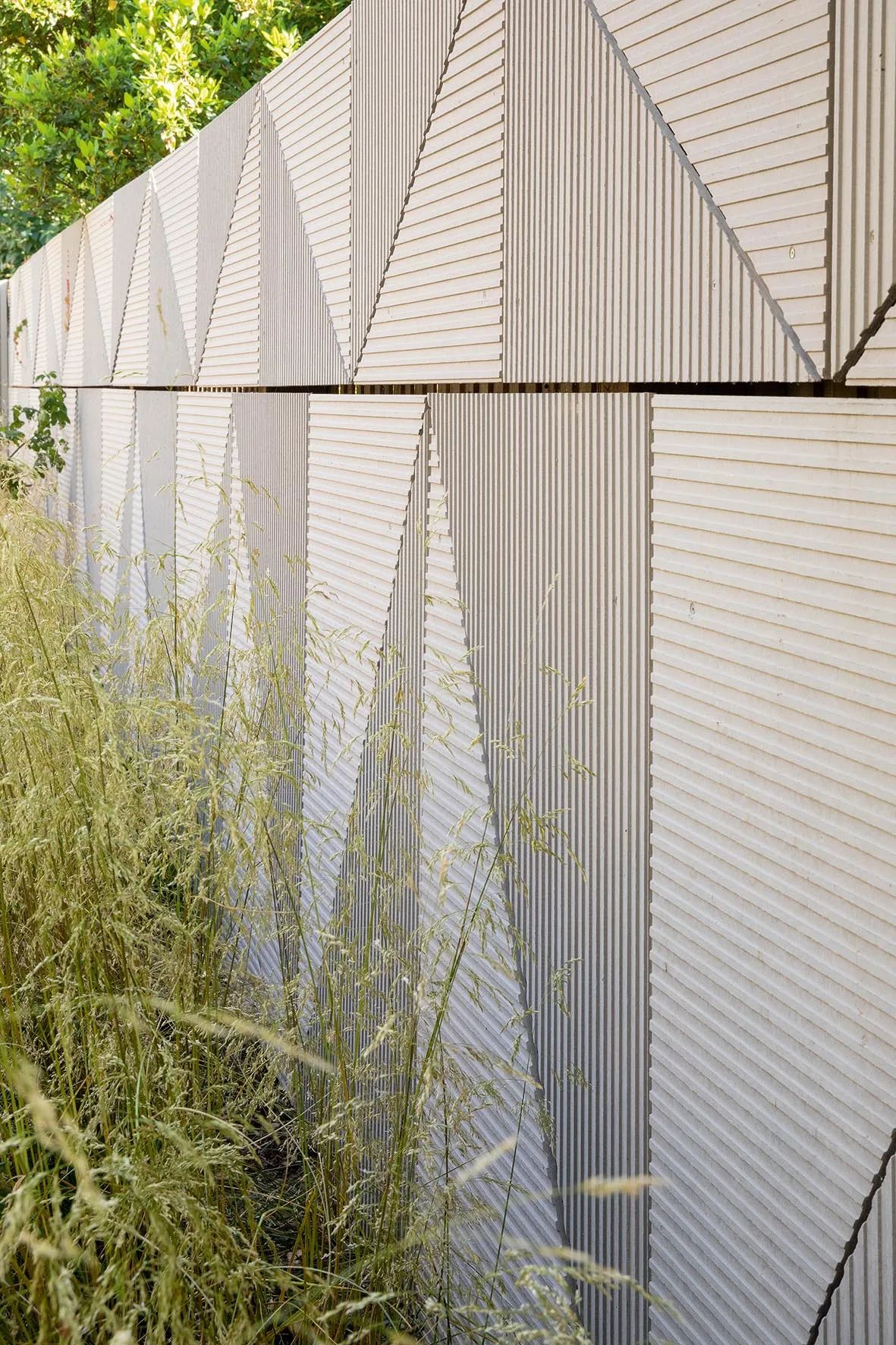Down an unlikely side alley in south London lies a most enviable refuge: a fusion of tranquil informality and high concept rarely exhibited in city gardens. Lucid Lychnis coronaria and Salvia nemorosa ‘Amethyst’ tumble over Corten steel, while a lawn-cum-meadow, rich with bedstraw and buttercup, flows from a boundary of light-filtering trees and climbing shrubs. This serene landscape was conceived by garden designer Jane Brockbank, working with Craftworks (formerly John Smart Architects) to unite house and garden through angular patterns, bespoke vistas and, despite its limited size, contrasting zones.
With the house – a once-derelict, unconsecrated chapel – progressively remodelled to include an open-plan living space, modern Gothic ceiling and eccentric nods to its ecclesiastical history, Jane had the opportunity to create a bold garden with textures, seasonal change and views of relaxed wildness seen through the building’s picture frame windows. “I had fun,” says Jane. “The high-faceted architecture forced me to work in a different way, dividing the planting into quite clear, different sections.”
These sections are composed of tessellated triangular shapes that mirror the chapel’s design; some are intensely planted for colour while others remain neutral. The latter, for example, comprise a simple mix of white astrantias and moor grass (Sesleria autumnalis); complementary plants that move with the breeze. Other zones include an airy bank of Stipa gigantea; tall Antarctic beech (Nothofagus antarctica) and Swedish birch (Betula pendula ‘Laciniata’) texturally underplanted with Euphorbia amygdaloides var. robbiae and Epimedium x rubrum, and a gravel section studded with spreading perennials such as Ajuga reptans, Lamium maculatum ‘Beacon Silver’ and pink sea thrift.
The centrepiece – if there is such a thing in a garden of triangles – is a formal seating terrace surrounded by a great swathe of jubilant repeat planting: tall sanguisorbas, bright Lythrum virgatum ‘Rosy Gem’ and the acid-green umbellifer Zizia aurea. Nestled towards the back are establishing feature shrubs of guelder rose, Euonymus alatus and Philadelphus ‘Belle Étoile’, all floating in a sea of Deschampsia cespitosa ‘Goldschleier’ that – when summer draws to a close – put on a spectacular autumnal show.
Discover more about the garden below
What City garden. Where South London. Soil London clay. Size 35m x 13m. Aspect Southeast facing. Special features Naturalistic planting in a zonal configuration with mixed border, wildflower lawn and gravel planting. Designed by Jane Brockbank Gardens

Tall spikes of purple loosestrife, Lythrum virgatum ‘Rosy Gem’ are a colour link to Lychnis coronaria, while behind, clumps of Astrantia major ‘Large White’ float in sea of the grass Sesleria autumnalis.
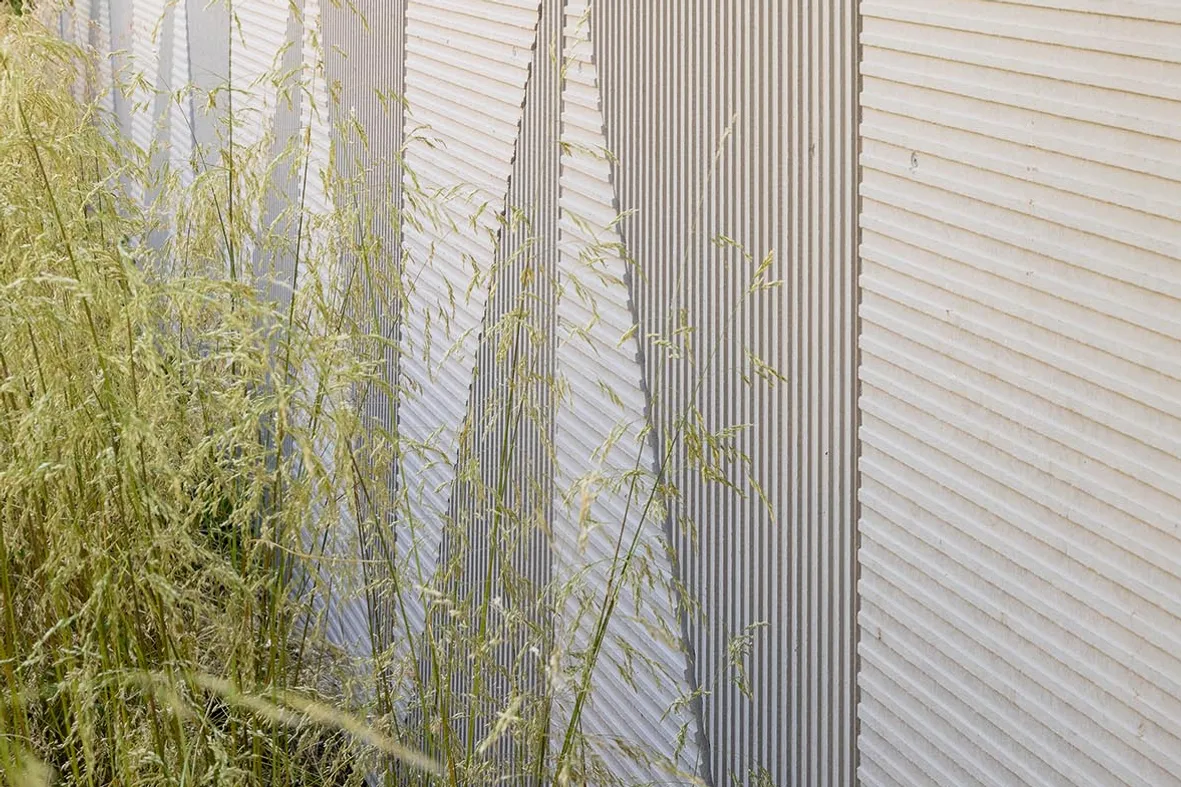
Textured cement board fence panels, in a triangular shape that echoes the Chapel’s extraordinary ecclesiastical roof, are softened by frothy grass Deschampsia cespitosa ‘Goldschleier’.
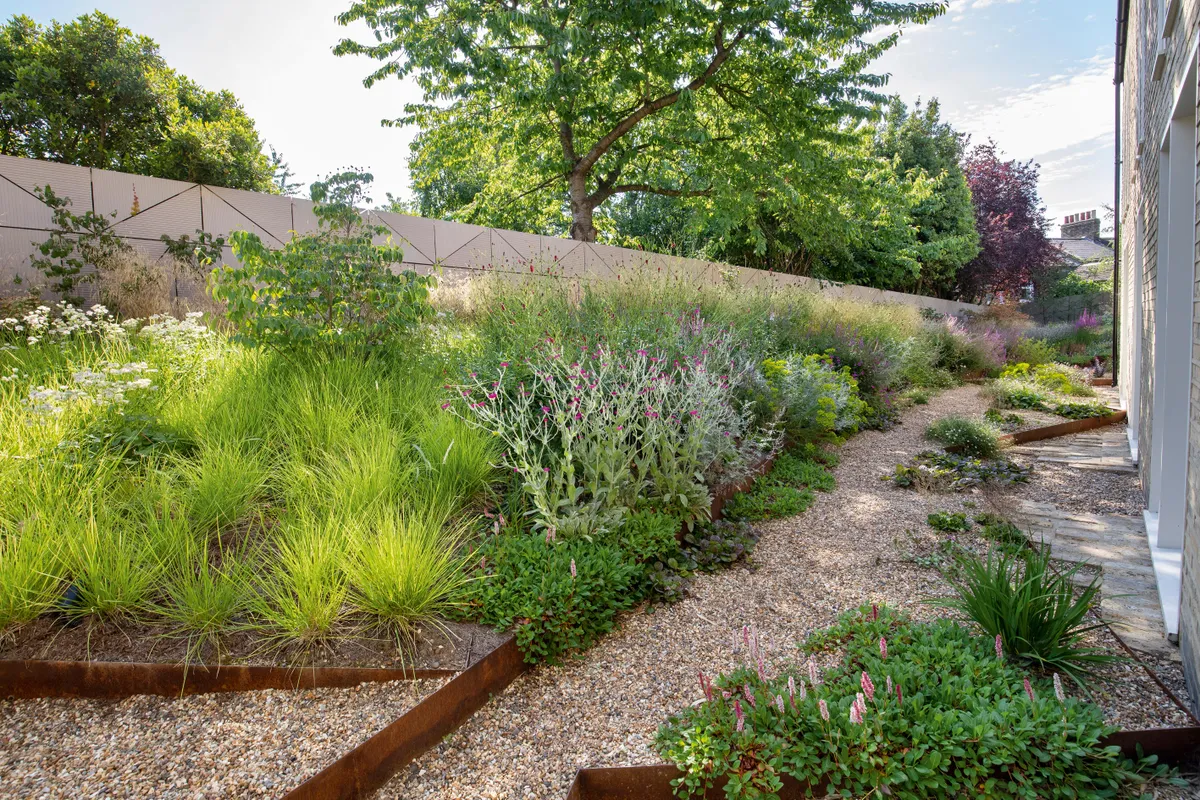
Lush and exuberant textural planting, featuring tall, herbaceous Sanguisorba officinalis ‘Red Thunder’ and the silvery leaved Lychnis coronaria, faces the converted chapel across a gravel zone planted with robust and spreading Persicaria affinis ‘Darjeeling Red’. Near the fence a Cornus kousa var. chinensis ‘China Girl’ shrub sits among the grass Sesleria autumnalis dotted with clumps of Astrantia major ‘Large White’.
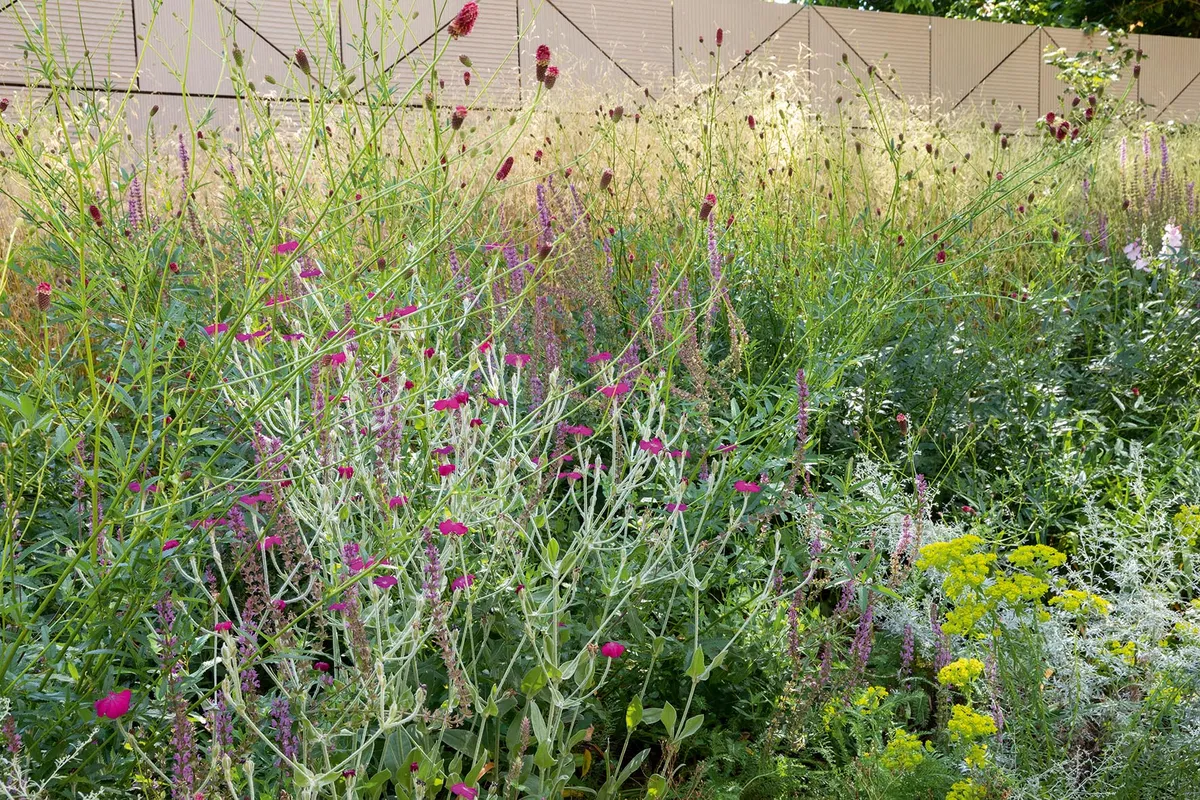
Yellow Euphorbia seguieriana stands out against shimmering Artemisia alba ‘Canescens’ in front of Sanguisorba officinalis ‘Red Thunder’ studding Deschampsia cespitosa ‘Goldschleier’.
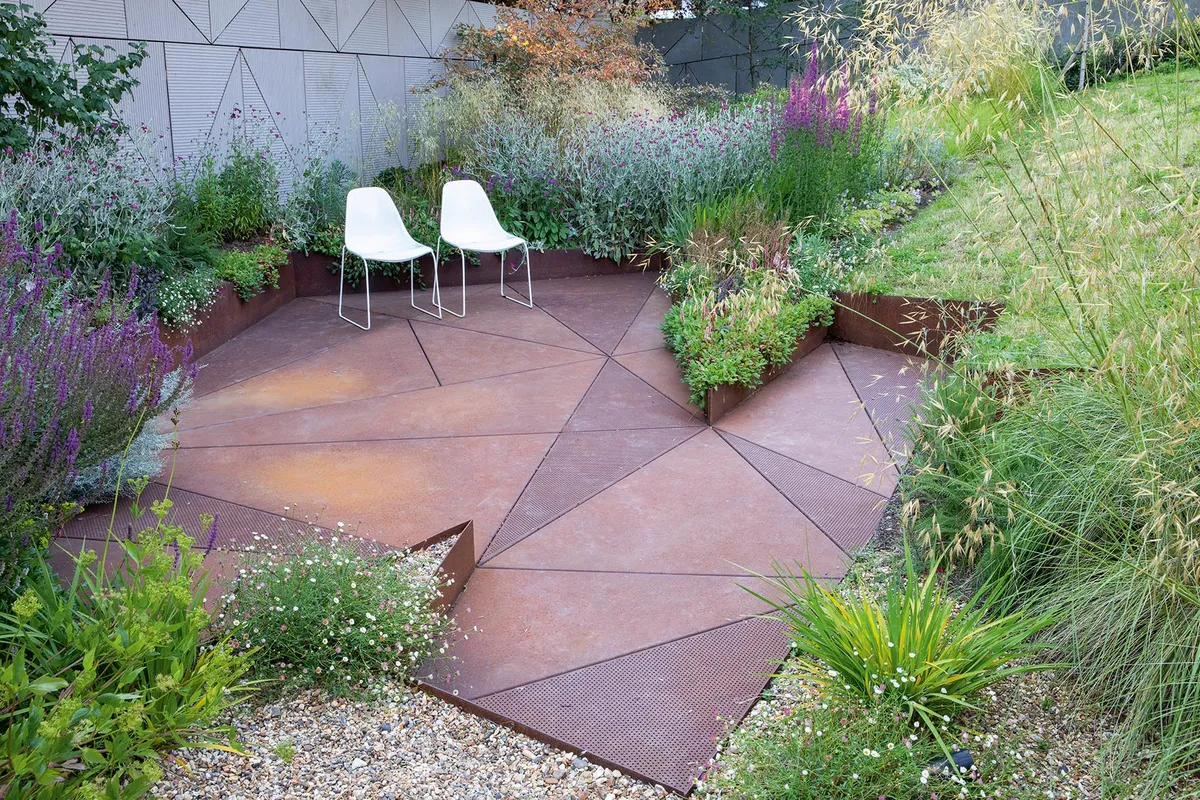
Triangular sheets of Corten steel create a central seating zone enclosed by a great swathe of jubilant planting, from tall, pink Lythrum virgatum ‘Rosy Gem’ to low-growing Persicaria affinis ‘Darjeeling Red’, which spills over the edging, bringing an informality to the garden’s structure.
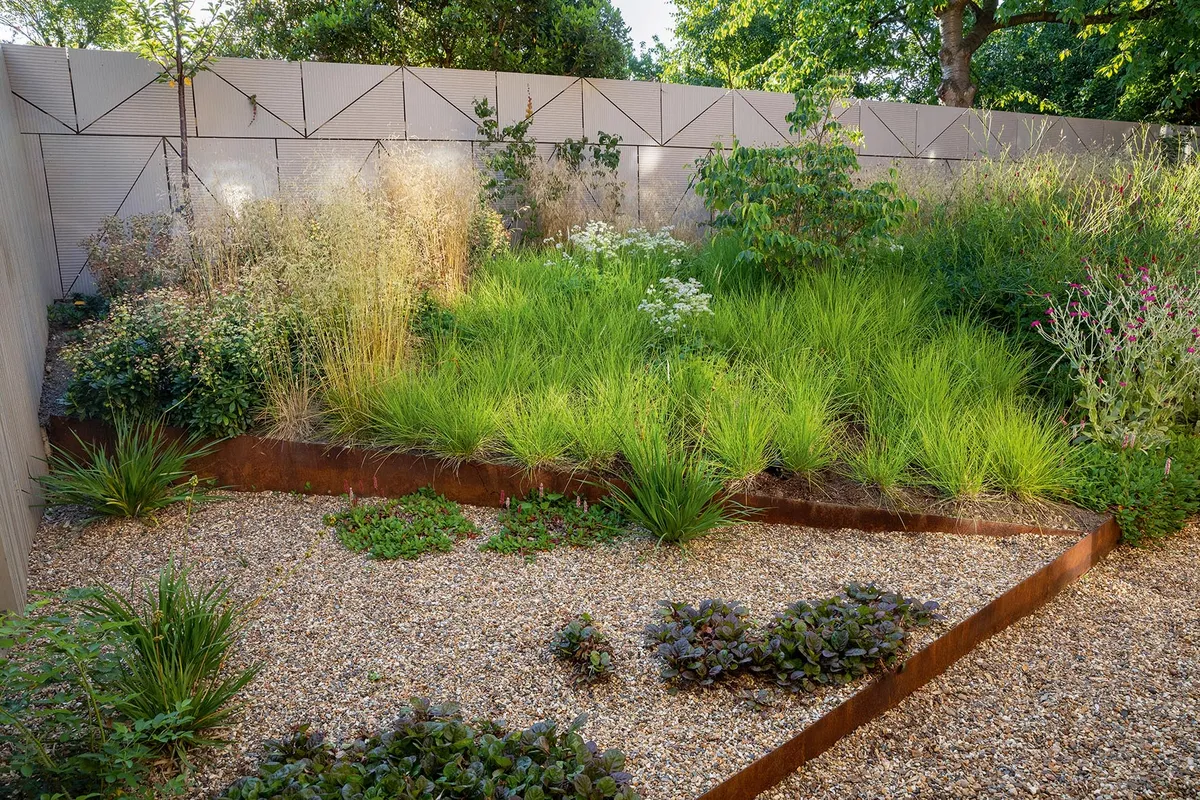
Corten steel edging defines the different zones, here separating lush planting from a gravel zone dotted with low-growing Ajuga reptans ‘Catlin’s Giant’ and Persicaria affinis ‘Darjeeling Red’.
Having zones in the garden
Gardens divided by formal hedges, walls or water, into what are generally called garden rooms, offer the chance to create a series of distinctive and unrelated planting styles. Zones can be a little more tricky to pull off, as the eye travels from one to the other unobstructed. “In a garden, you don’t want to have completely contrasting spaces in a long line,” explains Jane. “A garden wants to flow, so the zones have to speak the same language while shifting in colour and texture.” To achieve this Jane suggests selecting plants that have a naturalistic feel, such as loosestrife, euphorbias and grasses. “There’s nothing very hybridised in this garden,” she says. Repetition is also a good way to bring cohesion to a larger space. Jane has bookended this garden with neutral areas of Astrantia major ‘Large White’ and dense Sesleria autumnalis grass. Once a framework is in place elements can move around. “It’s about keeping areas clearly defined but also flowing together,” says Jane. “Avoiding things becoming too rigid.” As this garden illustrates so well, even the most contemporary of concept designs can allow nature to blur the edges.
